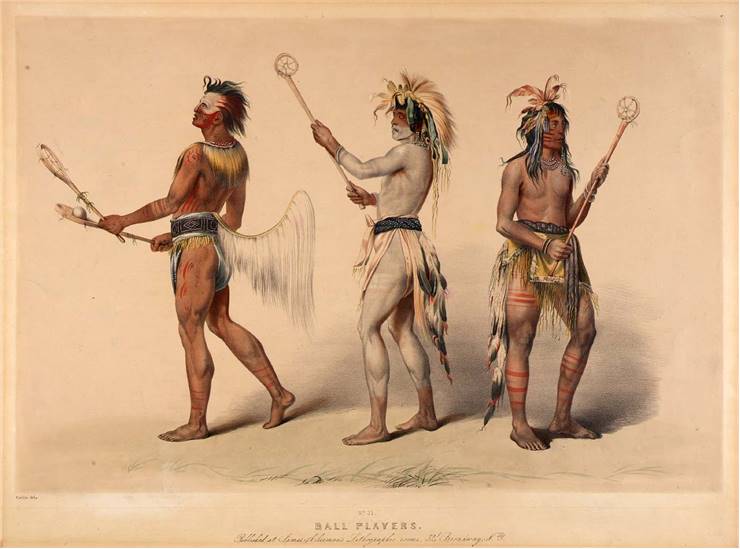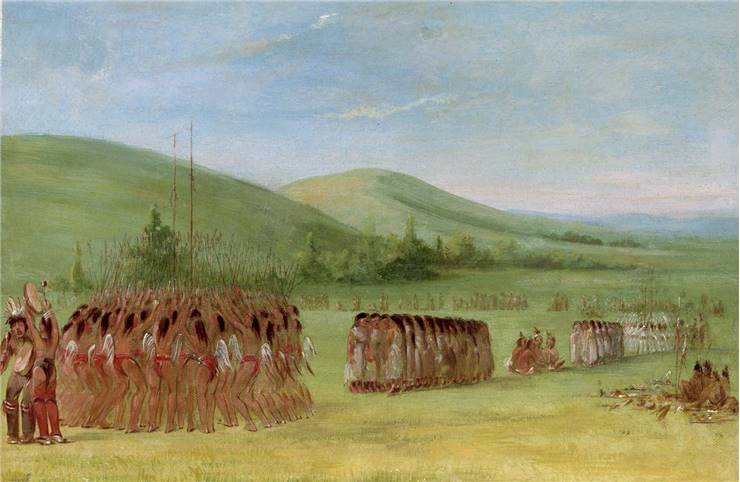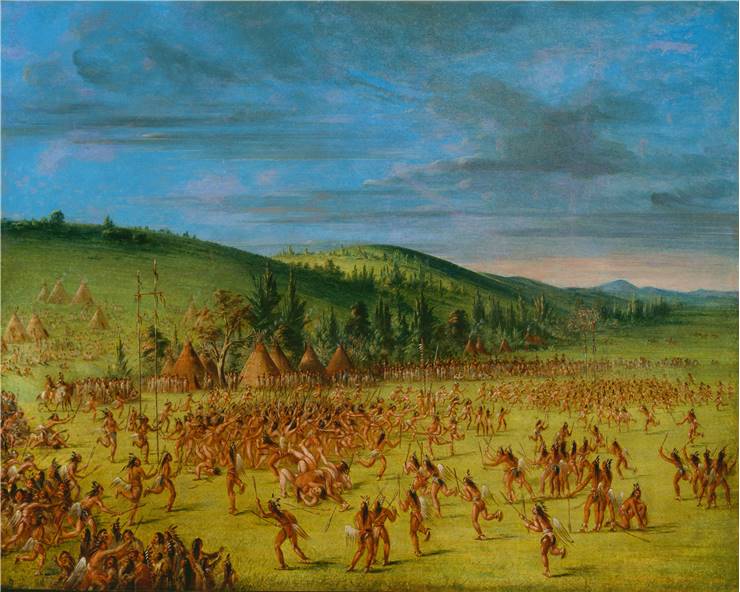History of Lacrosse - Who Invented Lacrosse?
Lacrosse was a game played by the Native American Indians that was originally known as stickball. It was discovered by French settlers who named it after the crosier, as some suggest. Since a netted racquet is used to hit the ball, it is easily differentiated from other team sports. (like team hokey and shinny).
The origin of lacrosse is rooted in religious customs of Native tribes who saw it as a tool to resolve wars, heal sick people, develop endurance and strength of male population. Big events like lacrosse were played in large areas, and it is believed that anywhere between 100 and 1,000 players could participate in one game.
The events were played in huge areas between villages, and the goals would range from 500 yards (460m) to 6 miles apart. The main rule was that the ball must not be touched with the hands. Other than that, the rules were simple, with no boundaries. Trees and rock were mostly used to mark the goals, but in later years, these were wooden posts. The beginning of the game was indicated by the ball tossed in the air, and players would rush to catch it first. The ball used for lacrosse was not of a standardized size. It would range between a tennis ball and a softball. According to sources, balls were made of deer hides filled with animal hair. However, some Indian tribes used wooden balls. The game used to be very violent, often causing broken limbs and, not uncommonly, deaths due to head blows.
Some French colonists were among the first to witness lacrosse played by Native American Indians almost 400 years ago. In 1636 the Frenchman Jean de Brébeuf was one of the first white to write about lacrosse. The contest he observed was called Huron, now in Ontario, Canada. Not so long after, colonists began to show great interest in the game. Being impressed by the level of engagement, speed, and rough play, soldiers started to wager between each other and pick their favorite players.
Players were traditionally involved in rituals before the game. Their faces and bodies would be decorated with paints and the stick racks. The shaman (medicine man) was crucial in preparing the rituals and holding a dance on the night before the game. He used the comb-like object made of turkey leg bone to scratch the players’ bodies, and he would repeatedly inflict wounds with the comb until a certain amount of blood drops fell an opponent’s elbow.
Settling arguments was one of the primary purposes of playing lacrosse. It was a tool of diplomacy in the early days. That is how tribes used to resolve territorial disputes and cultivate political fellowships. Since persistent warfare was not the best answer, tribes would set a date for lacrosse at convenient times.
Lacrosse appealed to tradition and set strong foundations for stability within the community. Tribes were creating myths of the first ball game that the gods themselves played. According to those stories, the ball symbolizes the sun and the moon moving across the sky.
It was the summer of 1763 when Sauk and Ojibway people started forging a plan to recapture Fort Michilimackinac from the British, who were at that time at war with France. Since the two Indian tribes preferred French trading practices to English ones, they thought of organizing a lacrosse game to distract British soldiers. The Natives set the date on the same day as the king’s birthday because the soldiers were not to be on duty but entertained by public wagering. When the game began, the players from both teams took the weapons from the women spectating the game, attacked the British soldiers, and recaptured the fort. This event is considered the day when lacrosse defeated the empire.
Lacrosse has greatly changed since the Natives played it in the 15th and 16th centuries. Many rules have been introduced to the game; the idea is to have fun and enjoy recreational competition with friends. The size of the field today is only about 100 yards instead of many miles long. The goals are no longer made of rocks and wood. The standard is a six by 6 feet goal. Also, the number of players is set to 10 at a time instead of hundreds, but sometimes there can be 6, depending on the lacrosse style. Over the last ten years, the sport has seen a significant increase in players in the USA, especially participants aged 15 and under.
The equipment used in lacrosse has undergone some major modifications. While Native tribes didn’t use any pads, players wore them on their shoulders and arms. Helmets and mouthguards are also worn. In the past, the sticks were made of wood, but today they are made of various metals, such as aluminum and scandium. The heads of lacrosse sticks have also greatly evolved. They used to be part of the entire stick – also made of wood – but now they are created out of plastic molded into various shapes for better handling. A long time ago, lacrosse was played in the plains of the New World in the 16th century, while today, people watch or play lacrosse in stadiums.
Apart from the eastern United States and Canada, the game is now becoming popular from coast to coast nationally and in other countries worldwide: England, Australia, Ireland, Germany, Japan, Czech, Wales, France, South Korea, Sweden, etc.
The father of modern lacrosse is considered to be, at the time, a young dentist named William George Beers. In September 1860, he tried to set new instructions and rules for Lacrosse, which had no written regulations. Additionally, he decided to replace the deerskin ball with one made of hard rubber.
The first modern appearance of lacrosse was in England in 1867, when 16 players, along with Captain W.B. Johnson, traveled for an exhibition game in Fulham, near London. The majority of the players were Native Americans from the Iroquois nation. However, some other nationalities were represented on the team as well.
The myth that lacrosse is the Canadian national sport still is echoed. It was most likely because Beer was so fascinated with the sport that he campaigned for it to become the national game. However, during the Confederation period, cricket was the most popular sport on the continent. In 1867 Beers claimed that the Parliament had made Lacrosse the national sport. Though many people in Canada believed him, there was no evidence that Lacrosse had been proclaimed as the country's national sport.
The first women’s lacrosse game was organized in Scotland's last decade of the 19th century. Before that, there was an attempt to start women’s lacrosse in Virginia in 1914, but it eventually failed. Miss Rosabelle Sinclair formed the first women’s lacrosse team in the United States at the Bryn Mawr School in Baltimore, Maryland.
Women played Lacrosse in Victoria, Australia, in 1936. However, due to unsuitable circumstances, the Australian Women’s Lacrosse Council was not founded until 1962.
The same rules were applied for men’s and women’s lacrosse offering no protective equipment until the mid-1930s. From that period, men’s lacrosse started to evolve rapidly, while women had to obey the game’s original rules onward.
The box lacrosse is an indoor version of the game originating in Canada. Only a little after it was introduced, it became a prominent sport in the country, primarily due to harsh winters preventing outdoor play.


